Royal Navy ships were to lose surface-to-surface anti-ship missile capability in 2018 when the Harpoon missile was originally to be withdrawn with a replacement not due until ‘around 2030’, the new interim missile will fill the upcoming gap.
Kevan Jones, MP for North Durham, asked:
“To ask the Secretary of State for Defence, what progress his Department has made on the interim Royal Navy surface-to-surface guided weapon (SSGW) programme.”
Jeremy Quin, Minister of State for the Ministry of Defence, responded:
“The Royal Navy has set the requirements for a Surface-to-Surface Guided Weapon (SSGW) to ensure they maintain the ability to deter and defeat enemy warships. A competition is now taking place and on current plans, subject to funding, we expect bids to provide a solution to SSGW, by mid-2021.”
Background
The Ministry of Defence had last year notified bidders of its intention to purchase an interim anti-ship missile as current Harpoon stocks reach end of life and a replacement not being due until 2030.
The Ministry of Defence issued a Prior Information Notice (PIN) for a “Next Generation Surface Ship Guided Weapon (SSGW)” to equip Royal Navy vessels..
The notice is as follows:
“Short description of nature and scope of works or nature and quantity or value of supplies or services:
The Authority has a possible future requirement to procure a next generation ship launched anti-ship weapon system for use within training and operational roles with the Royal Navy. First delivery of the ship installed equipment would be required by December 2022 and first delivery of missiles would be required by December 2023. The potential contract will be for 4 years, with the potential of option years to follow (up to 9 more years), the potential contract would cover the following activities:
Manufacture and delivery of the weapon system to be delivered in Financial Year 2023/2024.
Installation of the weapon system onto Royal Navy ships.
Provision and support of interface requirements to assist ships installation.
Provision of train the trainer courses.
Maintenance and technical support for the operational upkeep of the weapon system.
Should this requirement proceed, a Contract Notice will be published in due course with more precise requirements and interested parties will be invited to complete an online pre-qualification questionnaire, which will be measured against selected criteria in terms of commercial and technical requirements.
The technical requirement will be base lined against the user requirements and include questions regarding:
— battlefield effect,
— terminal effect,
— interoperability: climatic and environment,
— munition sensitivity,
— system and design safety,
— human factors,
— deployability,
— training,
— sustainability and supply chain,
— Capability resilience and reliability.
Evidence will be required at the PQQ stage to demonstrate the weapon system can meet the Authority’s requirement set. Estimated value excluding VAT: Range: between 100 000 000 and 200 000 000 GBP”
When Harpoon exits service in 2023 there will be a serious capability gap until the potential entry into service of FC/ASW programme in 2030 if this does not happen, warned a report published by the Defence Committee.


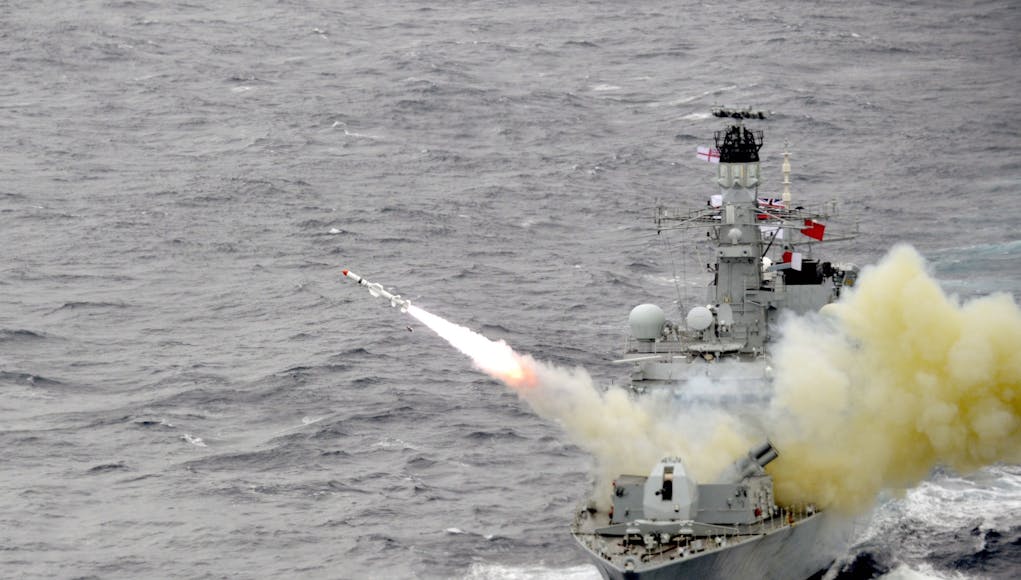


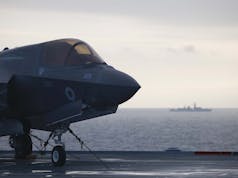
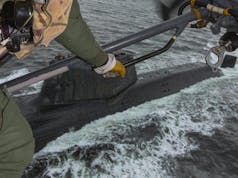

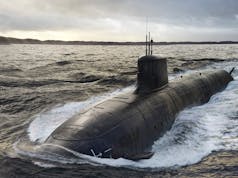


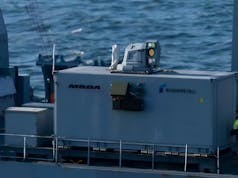


So, if first delivery of new missiles is not till December 2023, then the RN will not be getting a replacement for Harpoon by ‘mid 2021’.
Yeah it seems a bit daft. I already thought we had harpoon block 2 but that seems the most sensible option if we are looking to plug a 7 year gap.
These new anti ship and cruise missiles we are developing with the French will prob be expensive as f but we will need to order a load of them to bring the price down and have a genuine deterent.
I’m think harpoon Blk II is about the best we are getting which is probably good enough. The next generation missiles should combine land attack as well as anti ship as such anti ship missiles on surface ships have rarely if ever been used.
Excellent news, some of the new money being spent then I guess?
I would assume Block 2 harpoon would be a minimum integration effort too…
Agree. Harpoon blk 2 is favourite.
Harpoon Block II would be best. Put it on ships and P8 Poseidons, as well as our Typhoons and F35s.
What is the attraction of Harpoon Block II (beyond merely logistics?). The LRASM and NSM options are at least stealthy and LRASM has a much larger range, a more powerful warhead, and can operate independently of GPS which is essential in any high-ECM environment. Obviously LRASM is more expensive; NSM is cheaper with reduced range and warhead, but can maneuvre in the terminal phase of the engagement.
Surely any decent peer adversary will be able to take out a sub-sonic non-stealthy missile like the Harpoon/Exocet with relative ease compared to the other options?
The attraction is A price B current operation if the previous model. NSM and LRASM would be an expensive purchase for an interim capability out to 2030 and might jeopardise the future project.
NSM is much cheaper than the Harpoon II, is low-observable, has a longer range, is compatible with the Mk41 VLS, and the JSM version is compatible with the F-35 (can be fitted internally and on external hardpoints). I get the logistics side of it, but it just seems that to buy Harpoon II would be to pay more money for a less effective system.
From USNI.org:
https://news.usni.org/2018/05/31/raytheon-awarded-lcs-horizon-anti-surface-weapon-contract-deal-worth-848m
“The subsonic NSM has been in service with the Royal Norwegian Navy since 2012. The weapon has a range of about 100 nautical miles with a cost of slightly less than the Raytheon Tomahawk Block IV cruise missile (the Navy quotes the price per round of the TLAMs at $569,000 per round in FY 1999 dollars (about $868,000 in 2018, adjusted for inflation)).”
The unit price of a Harpoon II is ~$1.5million. LRASM is >$3million so probably unlikely, although it is clearly the most effective of the three.
I have to side with the NSM as well. It’s cheaper and stealthier, which are just about the two most important characteristics an off-the-shelf purchased missile needs to offer nowadays.
You would need to factor in the ‘soft’ cost though and not just the cost of the missiles themselves. Per Unit doesn’t equate to the big picture of training, ‘plumbing’ etc. and especially as its a stopgap then if they can just swap the missiles then its an easy fix. I’m making a few assumption there of course, I’m sure the manufacturer will be trying to squeeze as much out of it as they can so might throw in a ‘necessary’ upgrade along the line.
You will note that we don’t have a Mk41 launcher on an RN warship and will have virtually zero by 2030. The system will also have to be integrated into the ships combat management system. In addition our Blk 1 can be upgraded to block II status. Actually buying the missiles will likely not be the most expensive part of the program vs integration cost.
NSM is canister or helicopter launch. JSM is the one being looked at for mk41 & is also being looked at as a submarine torpeedo tube launch missile. JSM will not fit internal on UK F35B.
The main advantage to Harpoon II (& II+), is that basically little else changes. Just about every CMS already has it integrated. Same cabling, same canisters, same training. You only need the missiles, not the system. If it is only to go onto 5 x T23, everything is already there. If the planned replacement comes unstuck, start fitting NSM to T26/T31 as they come online. Last T23 goes in 2036, swapping missiles to T45 as they go.
“NSM and LRASM would be an expensive purchase for an interim capability out to 2030 and might jeopardise the future project.”
I think we all know that MoD procurement is quite capable of jeopardising projects all by itself without any outside help! 🙂
Judging by past history ships haven’t been very successful in defending themselves against the current crop of ASM. I don’t see that very much has changed in this regard especially when multiple Harpoons/Exocets are fired from different directions.
The only significant use of anti ship missiles was the Falklands,over 38 years ago. All of them were air or land launched. Apart from training exercises, usually involving single drone simulations, there is no experience anywhere of how effective AShMs will be against modern defences in full on combat. If Harpoon and Exocet, lacking stealth, can be intercepted, would rippled fired smaller missiles such as Sea Spear be more likely to penetrate the defences?
Just for historical interest there have been a number of more recent though less publicised cases.
In the 1991 Gulf War HMS Gloucester brought down an Iraqi Silkworm missile which was the first time that an anti-ship missile was succesfully intercepted in combat. More recently the USS Mason intercepted several land based anti-ship missiles (thought to be Chinese-exported C-802) off the coast of Yemen. Both of these instances involved sub-sonic non-stealthy ASMs.
There are also numerous instances of successful uses of anti-ship missiles against targets including by Iran, Iraq, and the USA, during the Iran-Iraq war in the 80’s, by India during the Indo-Pakistan War, and by Israel and Egypt during the Yom Kippur War (e.g. https://en.wikipedia.org/wiki/Battle_of_Latakia), and by the UK in the Falklands and the UK and USA in the 1991 Gulf War. In several of these instances, including the Falklands, missiles were decoyed away from their targets with chaff or electronic jamming.
Most of the cases listed above were in the 1970’s and 80s. Clearly missile/radar technology has moved on enormously since then; I really can’t help thinking that unless one is prepared to pay out for a missile with at least some technology advantage, such as supersonic flight or low radar cross section, then buying a missile with the rather paltry range and unimpressive flight envelope of the Harpoon II would basically a waste of money as it would be ineffective in modern battlespace. Likewise for the Exocet. Certainly SPEAR-3 can’t come soon enough as it would really give our F-35s the teeth I think they are currently a little bit lacking in.
I was aware (vaguely) of the other instances you cite. As you observe most of these pre-date the Falklands War. What I was querying was how effective modern AShms are against modern defences and I think we just don’t know. My guess is that a swarm of smaller missiles will pose a greater challenge to defences than a single larger non-stealthy one, against which navies have been practising since 1982. Sea Spear 3 is reported as having a range comparable to the larger missiles discussed but I presume a ship launched version (Sea Brimstone) would be shorter ranged, though much faster. It would be easier to install and more could be carried. Sea Venom packs a hefty punch but might be too short ranged for ship launch.
Sounds like now the decision has been made, the finger has been extracted and things are progressing. Good news on that front, hopefully there will be an easy and quick fix like Block 2 that will simplify things.
Morning all.
First new article I went to given the headline!
Now the Dragons Den detail, is this all escorts or just a handful?
It should be all escorts, I think.
Give every frigate and destroyer some offensive capability instead of having to constantly move launchers between ships.
Hope so Steve R.
In the naval domain it’s just about our biggest moan.
If i recall the original announcement (was it in 2019?) the market enquiry was for 5 sets which at time was assumed to be for GP version of Type 23…..but it would make sense to put them onto T45 and leave T23 as-is for now. Given US military protectionism i would go Scandinavian….. SAAB all other things being equal.
Morning Daniele,
I’d heard it was just a one-for-one replacement for what we currently have, which is a atch of cannister launchers that are fitted to vessels when they depart for locations which are considered to need it.
I’m not completely against this policy, and I guess there’s scope for then fitting these systems to T31 or something once F/CASW comes along.
I’d heard that the RBS15 was a pretty popular choice, as it’s got a bigger warhead and longer range than NSM, with land attack capabilities and an air launched version. However it doesn’t seem have any integrations onto any of our other platforms, which may not e a consideration for the competition but I feel it should be.
I really like NSM and LRASM, but they’re both quite expensive and NSM falls into a bit of a gap between light and heavy when it comes to warhead size.
Unless they can get the JSM to fit internally on F-35Bs, cleared on P-8A, and confirm decent commonality between NSM and JSM, Harpoon BII+ seems to be the winner for me.
Morning Joe.
This area of my knowledge is limited with regards missile capabilities.
Seems logical to me that whatever missile we go for should be able to be used from the air too.
I also feel that all our escorts should have ASM fitted as standard. We keep hearing of a return to state on state competition, well, fit our ships accordingly.
I’m not bothered if they go in a VLS or bolted to the deck in a cannister as long as they are effective.
Maybe they will just go for the best and go for the latest US missile. I read on here many also like the NSM. Whatever, just get something!
Your last sentence says it all really: None of the weapons people are talking about here are a bad option, just get one of them!
Did I mis-read the Banner / Headline or the the text???
Good news! Given that this purchase is needed urgently to avoid a capability gap and meant to be ‘interim’ since Harpoon II has GPS land attack capability and our vanilla P8s are wired for it, it looks to be a good and probably the least expensive overall choice.
‘Subject to funding’. Is this still aspirational or actual? I hope the subject to funding bit is just a bit of card marking about price.
Just a complete must for the RN. I know that there are people who say we are very unlikely to need them but I remember the Falklands war and the mix of SSN delivered torpedoes and the threat of anti-ship missiles defeated a fleet. Without this capability the RN would be unable to operate even against a medium equipped navy, especially as we have so few SSNs. Harpoon Block II would be favourite as it bolts on just like the Block I missiles.
As I read, this means “selection” is by mid-2021 (if with funding).
Then, when will be the IoC?
I read solutions provided by tenders by mid 2021, it doesn’t say that the decision will be made at that point or the order
In reality we still don’t know much. To be safe, we coukd really do with a next generation system now that we can also use on F35B. LRASM fits the bill very nicely with a bolt on cannister option, plus vertical launch for Type 26 but it will all depend on costs and how far ahead we want to go. There is actually no guarantee that we will have the new anglo- french missile in 2030.
So we are still looking for an ant-ship missile that by the time we test, choose and install, train with and will then supposedly be removed for a newer one in 10 years?
They have dragged their feet on this for way too long!
NSM seems an option
How about the Israeli ‘s Gabriel V with a 200km range! Finland replaced or is replacing its RBS15 with it after beating Harpoon, Kongsberg’s NSM, MBDA’s Exocet and Saab’s RBS15.
If its was compatible I quite like the Taiwanese, Hsiung Feng III but I think may be too big
Depends what the maximum length we can have as a missile
I do think we should move away from a US designed missile and move to a European or Far east solution as those are our future defence postures
I don’t think US missiles had the edge they once had.
We always had the know how to make good missiles but the costs of developing things in the old hardware days were phenomenal where every equation was another chip mask and if you wanted to change something you had to make another EMP tested and hardened chip.
Now it is a little different as we can apply that knowledge into the software domain and couple it with our always great radar and other sensor tech.
The limitations of the older generations of UK missiles (excluding gen 1) were mostly computational.
The US has the same gap as the UK, they just rushed the development when it became clear that their dominance was being challenged by China.
The West has been acting for a long time on the assumption that they control the waters and so ship-to-ship warfare was not going to happen. Similar to why most NATO nations have very limited SAM capability, based on the assumption of air supremacy, that is now looking less than secure.
I’m sure the US will catch up and overtake everyone tech wise quickly, but even with their money development takes time.
I am sure the MOD is fully aware that the odds of the FC/ASW entering into service in 2030 are close to zero, so realistically the gap will be much longer.
To my mind the RN needs to make a decision on whether it wants a war weapon or one that complies with the current peace time rules of engagement (ROE). The current radar guided anti-ship weapons do not comply with peace time ROE. This is because the ROE states that you must positively identifier you attacker and that they represent a clear and present danger. Unless that attacker is within line of sight, the over horizon missiles can’t be used on their own. They could however, if you had 3rd party support from aircraft or another ship that can positively identify the target. But then that could place them also in harm’s way!
The other problem with radar guided anti-ship missiles are they more easily decoyed by countermeasures. The “AI” within the missile is quite dumb and they will invariably lock on the target that has the greatest radar return within its field of view. Which could means it could change lock from the warship to a merchant vessel or a cruise liner if they were within its view. Of course many anti-ship missiles have a data link, but again unless the target is within line of sight, the operator will only see what the missile’s radar sees.
There are two anti-ship missiles that come to mind the obey the peace time ROE, the Kongsberg NSM/JSM and the Lockheed Martin LRASM. Both of these weapons use an imaging infrared (IIR) sensor that produces near picture quality images. They both have a two way data-link, so the operator can see what the missile sees, but also means the missile can be retargeted in flight. The LRASM also has an additional RF homing sensor. This sensor can lock onto a ship’s radar or radio transmissions. Both missiles have been designed to minimise their radar cross section (RCS) through shaping. Again, both missiles have been designed to work effectively both in the open ocean and the littorals.
The main differences are cost, range, size and the payload. The LRASM is significantly more expensive than the NSM/JSM, it is bigger and heavier, it also has a much larger warhead of 450kg (1000lbs) compared to 125kg (276lbs). The LRASM range has slightly more reach using a low flight profile than the NSM/JSM. Both of these weapons can be vertically launched from a Mk41 cell or from a container. Kongsberg were looking at integrating the missile with the Sylver VLS, as Italy were looking at purchasing the missile. They can both be used from aircraft. They are both being integrated for use by P8s and F35s. The NSM/JSM can be used against both sea and land targets. Lockheed Martin are hoping to give this feature to the LRASM. The USN are investigating if the LRASM could replace Tomahawk. The LRASM could have a 1000km range if they reduced the size of the warhead.
So purely based on an immediate need and price I’d go for the NSM/JSM. It meets the current ROE and can be used against land or sea targets. This gives the ship more options on how to respond to a threat. It also means the ship has one missile that can do two jobs, so you can if you have the space raise the missile count. It is likely that if other countries are purchasing the NSM/JSM for their P8s and F35s, we may follow suit.
However, the LRASM provides a greater terminal effect on the target, whereas you may need two or more NSM/JSMs to do the equivalent damage. The LRASM is being looked at to replace Tomahawk, which creeps into the same territory as the joint French/UK future anti ship missile, as it is designed to replace not only Exocet/Harpoon but also Storm Shadow.
DaveyB
The JSM missile also has the addition of a passive RF seeker (due to Australia joining Norway in funding the missile – it’s an Australian RF seeker). There has been talk of possible back porting to NSM as an upgrade.
Best guess? Harpoon Block II possibly Block II +.
As an interim fit the RN is not going to pish away a load of cash on a new system when It can upgrade the current missiles and systems with Mod Kits in house or buy new direct from Boeing. If its going to fit them to T23s that’s around 60 missiles at the most including spares for test firings and war stock.
The onboard systems and more importantly the power supplies, cabinets and wiring are already in place. Harpoon being derived from an original air launched weapon has the weirdest power supply requirements ever. There is a big Static power converter cabinet to convert and supply the voltages to the missile and control systems. That can stay so its one less headache. Safety cases are already in place and everyone knows the emergency procedures for Harpoon weapon issues so less training all-round for the ships crew.
The shoreside infrastructure is already in place at the ammo depots. The onboard maintainers know the system and would only need an amended PJT ( Pre Joining Training) package to take on the upgraded system. The operators would be the same. You will not need to reinvent the wheel as you would with a brand new system.
Block II + has a data link so the current issue of OHT (Over the Horizon Targeting) would be moot. That said RN Helos regularly conduct OHT targeting drills for drill shoots and engagements for the current system and that wont change. It can do land attack which is another plus. Ok the range is average at around 100 miles but it means you don’t need a substantial kill chain with Harpoon as you do for for something like LRASM.
It’s got to be NSM or LRASM. Both mk41 vl capable or launched from deck mounts. NSM could potentially be fitted onto F35Bs. Or in deck mounts from smaller vessels like River batch 2s.
It is a very adaptable, relatively stealthy weapon with some limited ground attack secondary functionality.
Cheapish as well.
Has to be the top contender surely